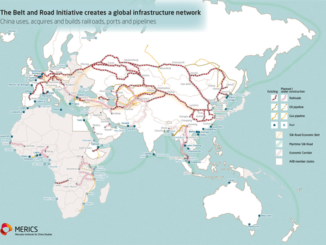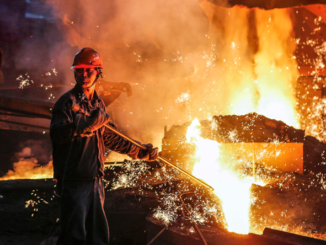
The United States has said China is expanding its arsenal of nuclear weapons even more quickly than expected.
China had more than 500 operational nuclear warheads by May 2023 and was “on track to exceed previous projections”, the Pentagon said in its annual report (PDF) on China’s military power, which was released on Thursday.
list of 4 items
list 1 of 4
Russia-Ukraine war: List of key events, day 604
list 2 of 4
Biden says US ‘holds world together’ as he condemns Putin and Hamas
list 3 of 4
‘We will cut out your tongue’: Filipino activists recount kidnap ordeal
list 4 of 4
Liverpool star Mohamed Salah calls for end to ‘massacres’ in Gaza
end of list
It added that Beijing was likely to have more than 1,000 operational nuclear warheads by 2030, and will continue expanding its capabilities to ensure its modernisation is “basically complete” by that year.
That would still be considerably below the US and Russia’s current deployed nuclear arsenal, however, with Washington having about 1,410 nuclear warheads and Russia 1,550.
China is currently embarking on a mission to develop new weaponry and enhance its military training as part of a major modernisation drive to ensure the country has a “world class” military by 2049.
As well as its nuclear expansion, the report said China was developing a new intercontinental ballistic missile system using conventional arms that would allow Beijing “to threaten conventional strikes against targets in the continental United States, Hawaii and Alaska”.
The Pentagon report, which follows the release last week of a congressional evaluation of the US’s strategic defence posture, said the Chinese determination to modernise was partly driven by a belief that the United States “was engaged in a systematic effort to suppress China’s development, prevent Taiwan’s unification with mainland China, and maintain US global hegemony”.
The report noted that China had “amplified diplomatic, political, and military pressure against Taiwan” in 2022, and stepped up “provocative and destabilizing actions” in and around the Taiwan Strait.
Beijing claims the self-ruled democracy as its own and has not ruled out the use of force to take control of the island.
Taiwan has reported almost daily Chinese military flights into its self-declared air defence identifcation zone (ADIZ), as well as increased Chinese naval activity, including by the aircraft carrier Shandong. Land-based military exercises have also taken place on the coast facing Taiwan.
Last month, Beijing defended such activities, saying they were necessary to “combat the arrogance” of alleged separatists in Taipei.
The US report suggested China was also “learning lessons” from Russia’s war in Ukraine, and that the sanctions imposed on Moscow had probably encouraged China to push for improved defence self-sufficiency and financial resilience.
The Pentagon also expressed concern about the Chinese military’s continued “refusal to engage in military-to-military communications with the United States” at a time when it also appeared to be willing to engage in more risky operational activities, noting the increasing number of intercepts by Chinese planes of US aircraft.
Such behaviour “raises the risk of an operational incident or miscalculation spiraling into crisis or conflict,” the report said, stressing that the defence department was determined to reopen lines of communication and “ensure competition does not veer into conflict”.
Li Shangfu, the Chinese defence minister who disappeared from public life in August, had been under US sanctions since 2018.
He had refused to hold meetings with US officials until sanctions were lifted, and US Defense Secretary Lloyd Austin’s attempt to hold talks during the high-level Shangri-La Dialogue in June this year, got no further than a handshake.
Pentagon’s annual report says China has more than 500 nuclear warheads and is likely to double that by 2030.
ENB Top News
ENB
Energy Dashboard
ENB Podcast
ENB Substack



